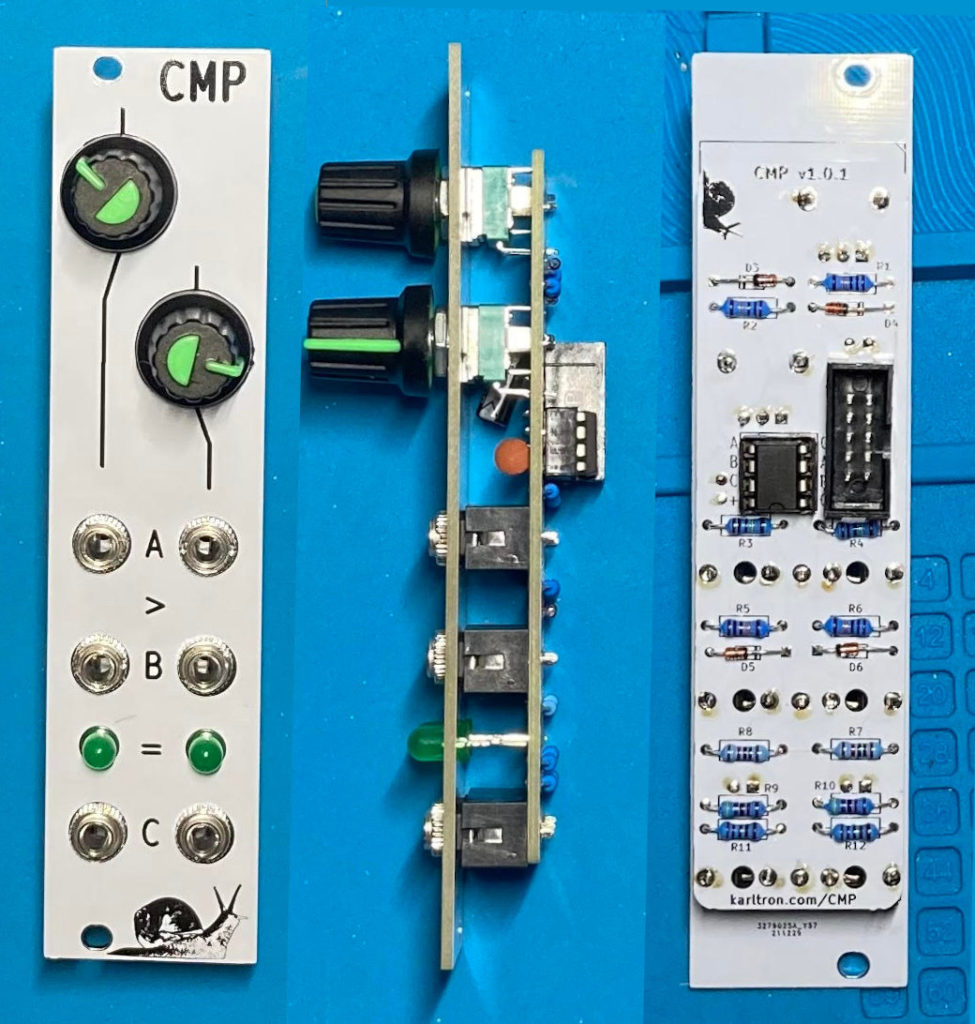CMP is a utility module in 6HP, simply comparing two voltages. Dual channel. It performs the logic operation A>B=C in a unipolar fashion, thus giving about 0-11V outputs. B is normalled to +12V, and run through the attenuator knob, so you can use just A and the knob sets a threshold voltage where the output goes high.

This sort of logical operation can translate a saw or triangle VCO into a square wave with variable pulse-width. An LFO into a gate pattern, or a random CV sequence into a random gate pattern. Put in two LFOs and you get a swing clock pattern.
It’s through-hole construction is very easy for DIY soldering. The opamp specified is a LM358, which is the cheapest way to get a 0V pushed output. Does not use the -12V rail, we’re clamped to 0 and +12V.
| Item | Price | Note |
| PCB/Panel Set | $25 | |
| Full kit (incl pcbs) | $40 | |
| Assembled & Tested | $60 |
CMP has very few parts, and all through-hole, so that makes it a good kit for beginners to DIY modular and soldering. On the other hand, it being a utility module for manipulating other modules’ signals, might not be the most useful for real beginners to modular.
Build Guide / Bill of Materials v101 and an ibom
Depth 20 mm is one PCB and a shrouded power header.
Power Draw is very low, hard to get a good reading below 15mA, almost zero. Seems to be about 1mA in normal operation, but you can abuse it to draw 15mA if you patch the output to an opposite output.